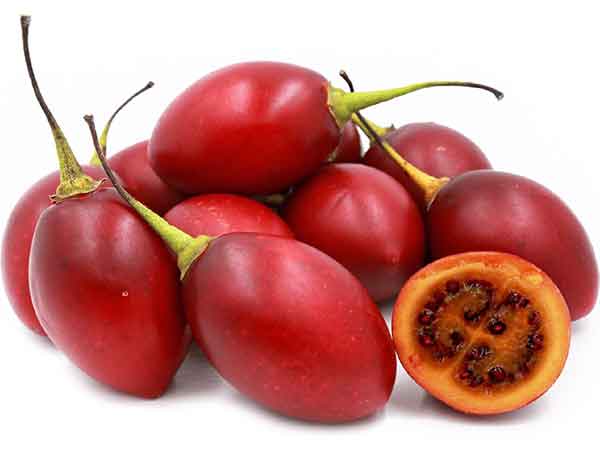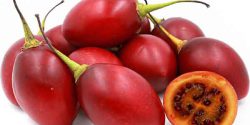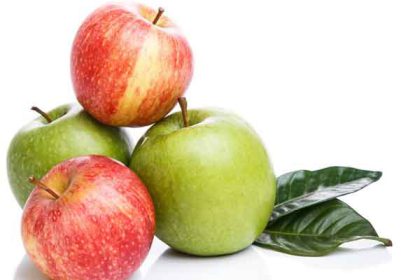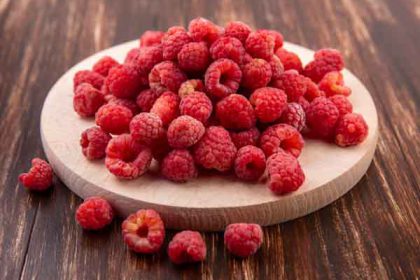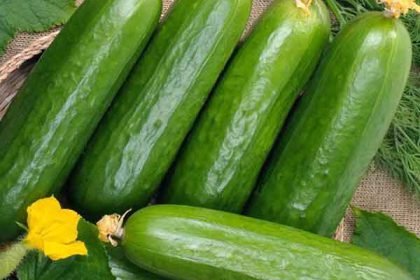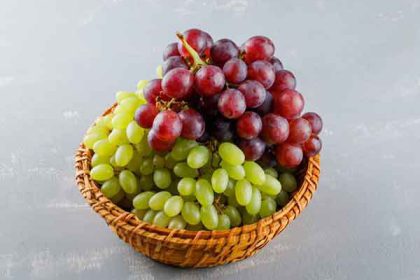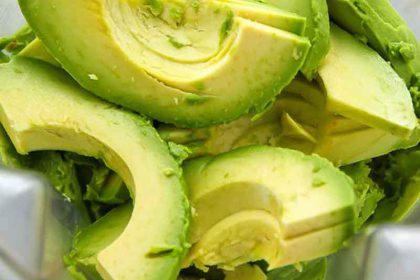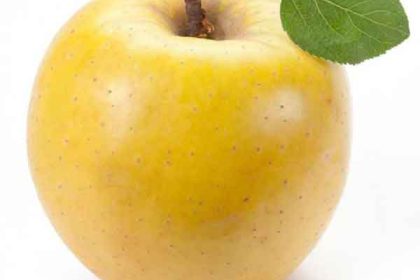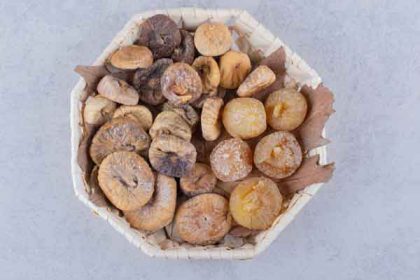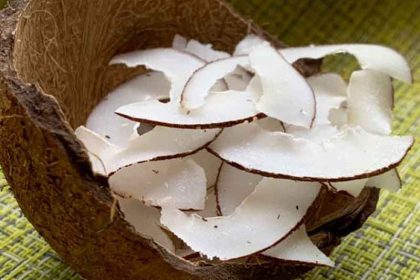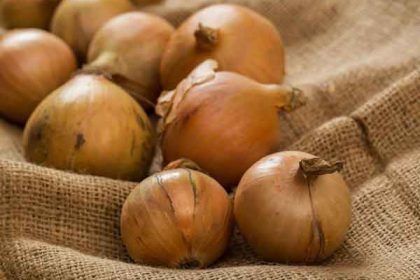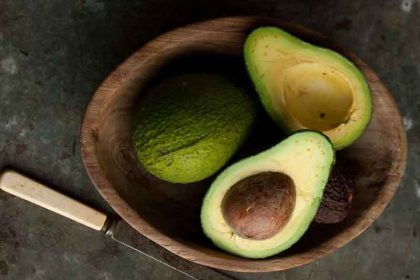Tree tomato benefits for pregnancy and diabetes and weight loss
Tree tomato fruit
Tree tomato benefits for pregnancy and diabetes and weight loss On Nichooli site. We hope this article will be of interest to you.
Tree tomatoes, or tamarillos, are nutrient-rich fruits beneficial for health. They contain vitamins A, C, E, and minerals like potassium and manganese, offering antioxidant properties, supporting heart health, vision, and digestion. They are also useful for weight loss due to their low calorie and high fiber content. While beneficial for boosting immunity and managing blood sugar levels, they may cause side effects like allergies, acid reflux exacerbation, and gastrointestinal discomfort in some individuals. Versatile in cooking, they can be used in various dishes, including salads and jams. Tree tomatoes are generally safe and beneficial for pregnant women when consumed in moderation, but consultation with a healthcare provider is advised. Their overall nutritional profile supports general well-being, indirectly benefiting sexual health and diabetes management.
Tree tomato benefits
Tree tomato, also known as tamarillo, is a fruit native to South America and offers numerous health benefits:
Rich in Nutrients: Tamarillos are a good source of vitamins and minerals. They are particularly high in vitamins A, C, and E, and contain minerals like potassium and manganese.
Antioxidant Properties: The high levels of vitamins A, C, and E in tamarillos act as antioxidants. These compounds help neutralize harmful free radicals in the body, potentially reducing the risk of chronic diseases such as heart disease and cancer.
Heart Health: Tamarillos are beneficial for heart health due to their potassium content, which helps regulate blood pressure, and fiber, which helps lower cholesterol levels.
Good for Vision: Vitamin A in tamarillos is essential for maintaining healthy vision, reducing the risk of age-related macular degeneration, and improving night vision.
Aids Digestion: The dietary fiber in tamarillos helps to promote regular bowel movements and prevent constipation. Fiber also helps in maintaining a healthy digestive system.
Supports Weight Loss: Being low in calories and high in fiber, tamarillos can be a useful part of a weight loss diet. Fiber helps keep you feeling full, reducing overall calorie intake.
Boosts Immunity: The high vitamin C content in tamarillos supports the immune system, helping to prevent infections and illnesses.
Skin Health: Vitamins A and C, along with antioxidants in tamarillos, are beneficial for skin health. They help in repairing tissue damage and in preventing signs of aging.
Blood Sugar Control: The fiber in Tamarillos can help regulate blood sugar levels, making them a good choice for people with diabetes or those at risk.
Anti-inflammatory Effects: Tamarillos may have anti-inflammatory properties, which can help in reducing the risk of inflammatory diseases and alleviating symptoms of conditions like arthritis.
Tree tomato side effects
Tree tomatoes, or tamarillos, are generally safe for most people to eat. However, like any food, they can cause side effects in certain circumstances:
Allergies: Although rare, some people may be allergic to tree tomatoes. Symptoms of an allergic reaction can include itching, swelling, and difficulty breathing.
High Acidity: Tamarillos are acidic, which might cause or exacerbate symptoms of acid reflux or gastroesophageal reflux disease (GERD) in some individuals.
Interaction with Medication: Due to their high vitamin K content, tree tomatoes may interfere with blood-thinning medications like warfarin. Patients on such medications should consult their doctor before including tree tomatoes in their diet.
Gastrointestinal Discomfort: For some individuals, the high fiber content in tamarillos may cause gastrointestinal issues like bloating, gas, or diarrhea, especially when consumed in large amounts.
Oral Allergy Syndrome (OAS): Some people may experience OAS, a cross-reaction between certain pollens and fruits, which can cause mild allergic symptoms like itching or tingling in the mouth.
Kidney Stones Risk: People who are prone to kidney stones, particularly oxalate stones, might need to be cautious. Tamarillos contain oxalates, and consuming high amounts of oxalate-rich foods can contribute to the formation of these stones.
Does tree tomato increase blood?
Tree tomatoes, or tamarillos, are not specifically known for increasing blood volume or production. However, they do contain nutrients that are beneficial for overall blood health:
Iron Content: While tamarillos are not a significant source of iron (a key nutrient in the production of red blood cells), they do contain some iron. Consuming them as part of a balanced diet can contribute to your daily iron intake.
Vitamin C: Tamarillos are rich in vitamin C, which enhances the absorption of iron from the digestive tract, especially the non-heme iron found in plant-based foods. This can be beneficial in preventing or treating iron deficiency anemia.
Folate: They also contain folate (vitamin B9), which is important for the formation of red blood cells and preventing anemia.
While tamarillos offer nutritional benefits that can support blood health, they should not be relied upon as a primary source for increasing blood volume or treating blood-related conditions. For concerns regarding blood health, including conditions like anemia, it’s important to consult with a healthcare professional. They can provide specific dietary recommendations and treatments based on individual health needs.
Tree tomato recipes
Here are a few tree tomato (tamarillo) recipes you can try:
Tree Tomato Salsa:
The term “tree tomato” can sometimes refer to a few different fruits, including the tamarillo, which is the most commonly known tree tomato. However, if you’re referring to another type of tree tomato, it’s important to note that the recipes may vary based on the specific variety and its flavor profile.
Assuming you might be referring to a fruit similar to the tamarillo but not exactly the same, I’ll provide a versatile recipe that can be adapted based on the specific type of tree tomato you have. This recipe will be for a simple Tree Tomato Salad, which can be a refreshing way to enjoy the unique taste of the fruit.Ingredients:
3-4 tree tomatoes, peeled and sliced
Mixed salad greens (such as lettuce, spinach, arugula)
1 avocado, sliced
1 small red onion, thinly sliced
Feta cheese, crumbled (optional)
Olive oil
Balsamic vinegar
Salt and pepper, to taste
A handful of nuts (such as walnuts or pine nuts, optional)
Instructions:
Prepare the Tree Tomatoes: Start by peeling the tree tomatoes. If the skin is tough, you can blanch them in boiling water for a minute and then transfer to cold water. The skin should come off easily. Slice the tree tomatoes into rounds or wedges, depending on your preference.
Assemble the Salad: In a large salad bowl, combine the mixed greens, sliced tree tomatoes, avocado, and red onion. If using, add the crumbled feta cheese and nuts.
Dressing the Salad: Drizzle olive oil and balsamic vinegar over the salad. The amount can be adjusted based on your taste preferences. Gently toss the salad to evenly coat the ingredients.
Season and Serve: Season the salad with salt and pepper to taste. Give it a final gentle toss and serve immediately.
This salad is a great way to enjoy the unique flavor of tree tomatoes, complemented by the creaminess of avocado and the tangy balsamic dressing. Feel free to adjust the ingredients according to what complements your specific variety of tree tomato best.
Tree Tomato Chutney:
Ingredients:
4 tree tomatoes, peeled and chopped
1 small onion, finely chopped
2 cloves of garlic, minced
1-inch piece of ginger, grated
1 tablespoon vegetable oil
2 tablespoons brown sugar
2 tablespoons apple cider vinegar
1 teaspoon mustard seeds
1/2 teaspoon chili flakes (adjust to taste)
Salt to taste
Instructions:
Heat the vegetable oil in a saucepan over medium heat. Add the mustard seeds and let them sizzle for a few seconds until they start to pop. Add the chopped tree tomatoes, onion, garlic, ginger, and chili flakes to the pan. Cook for about 10 minutes, stirring occasionally, until the mixture thickens and the Tree tomatoes soften. Add the brown sugar, apple cider vinegar, and salt. Stir well to combine.
Reduce the heat to low and let the chutney simmer for another 15-20 minutes, or until it reaches a jam-like consistency. Remove from heat and let the chutney cool completely. Transfer to a jar and store in the refrigerator. The flavors will continue to develop over time. Serve the tree tomato chutney as a condiment with roasted meats, cheese platters, or as a spread on sandwiches. These recipes provide a starting point for using tree tomatoes but feel free to experiment and adapt them to suit your taste preferences.
Tree tomato Benefits in pregnancy
Tree tomatoes, known in some regions as tamarillos, can be beneficial during pregnancy when consumed as part of a balanced diet. However, it’s always important to consult with a healthcare provider regarding any dietary changes during pregnancy. Here are some potential benefits of tree tomatoes for pregnant women:
Rich in Vitamins: Tree tomatoes are a good source of vitamins A, C, and E. Vitamin A is crucial for the development of the baby’s organs, Vitamin C supports the immune system, and Vitamin E plays a role in skin health and may help prevent stretch marks.
Folate Content: Folate (vitamin B9) is essential during pregnancy for the development of the neural tube and preventing birth defects. Tree tomatoes contain some folate, contributing to the daily requirements.
Potassium Source: The high potassium content in tree tomatoes can help maintain electrolyte balance, reduce leg cramps, which are common in pregnancy, and help in managing blood pressure.
Fiber Rich: The dietary fiber in tree tomatoes aids in digestion and can help prevent constipation, a common issue during pregnancy.
Antioxidant Properties: Antioxidants in tree tomatoes, such as vitamin C and flavonoids, can help protect against cellular damage and support overall health.
Low in Calories: For those watching their weight during pregnancy, tree tomatoes are a low-calorie option that is also nutrient-dense.
Hydration: Due to their high water content, tree tomatoes can help in maintaining hydration, which is particularly important during pregnancy.
How to eat tree tomato?
Eating a tree tomato, also known as a tamarillo, is quite simple and similar to how you might enjoy other fruits. Here’s a guide on how to prepare and eat them:
Basic Preparation
Wash the Fruit: Always start by washing the tree tomato under running water to remove any dirt or residues.
Peel the Skin (Optional): The skin of the tree tomato can be quite bitter and tough, so many people prefer to peel it. To do this easily:
Make a small cross at the top of the fruit with a knife.
Place the fruit in boiling water for about 30 seconds.
Remove and immediately place it in cold water.
The skin should now peel off easily.
Cutting: Slice the tree tomato in half lengthwise. You can also slice it into rounds if you prefer.
Ways to Eat Tree Tomato
Raw: Simply scoop out the flesh with a spoon and eat it directly. The taste is a unique combination of sweet and tart.
In Salads: Add sliced or cubed tree tomato to salads for a refreshing and tangy flavor.
As a Topping: Use it as a topping for yogurt, cereal, or desserts.
Make a Salsa: Combine it with ingredients like onion, cilantro, lime, and chili to create a delicious salsa.
In Smoothies: Blend it with other fruits, yogurt, or milk for a nutritious smoothie.
Cooked: Tree tomatoes can be used in cooking. They work well in stews, sauces, and even curries.
Other Tips
Taste and Sweetness: Tree tomatoes have a somewhat tangy flavor, so if you find them too tart, you can sprinkle a little sugar or drizzle honey over the flesh.
Seeds: The seeds inside are edible, so you don’t need to remove them.
Remember, tree tomatoes are versatile and can be used in both sweet and savory dishes. Experiment with different ways of incorporating them into your meals to enjoy their unique flavor and nutritional benefits.
How to eat tree tomato seeds?
Tree tomato seeds, found within tamarillos, are edible and can be consumed along with the fruit’s flesh. Here’s how you can enjoy them:
Eating Tree Tomato Seeds Directly with the Fruit
Raw Consumption:
Wash the tree tomato thoroughly.
Slice it in half lengthwise.
Use a spoon to scoop out the flesh and seeds directly from the skin, similar to how you would eat a kiwi or avocado.
The seeds are small and surrounded by the juicy flesh of the fruit, making them easy to eat raw.
In Salads and Dishes:
Prepare the tree tomato by washing and slicing or cubing it, as desired.
Include the seeds in salads, salsas, or other dishes where you’re using the tree tomato. The seeds add a slight crunch and extra texture.
Using Tree Tomato Seeds in Cooking
Sauces and Stews:
Tree tomato flesh and seeds can be cooked down to make sauces or included in stews. They add a unique flavor and texture to the dish.
Jams and Preserves:
When making tree tomato jam or preserves, the seeds are typically cooked along with the flesh. They contribute to the jam’s texture and nutritional content.
Nutritional and Culinary Notes
Nutritional Content: Like many seeds and kernels found in fruits, tree tomato seeds contain nutrients and can be a good source of fiber.
Texture and Flavor: Tree tomato seeds are quite small and have a crunchy texture. They are surrounded by the fruit’s pulp, which is tangy and somewhat sweet, depending on the ripeness of the fruit.
Digestibility: Generally, the seeds are easily digestible for most people. However, as with any food, individual reactions can vary.
In summary, tree tomato seeds are a natural part of the fruit and can be consumed along with the flesh. There’s no need to remove them, and they contribute to the overall eating experience of the tree tomato. Whether enjoying the fruit raw, in salads, or as part of a cooked dish, the seeds can be included seamlessly.
Tree tomato pickle recipe
Making a pickle with tree tomatoes (tamarillos) can be a delightful way to preserve their unique tangy flavor. Here’s a simple recipe for tree tomato pickle:
Ingredients
1 kg tree tomatoes (tamarillos)
1 large onion, thinly sliced
2-3 garlic cloves, minced
1 cup white vinegar
1/2 cup sugar (adjust to taste)
1 teaspoon salt
1/2 teaspoon black pepper (or to taste)
Optional spices: mustard seeds, cumin seeds, coriander seeds, red chili flakes
Instructions
Prepare the Tree Tomatoes:
Wash the tree tomatoes thoroughly.
Blanch them in boiling water for about 30 seconds, then transfer them to cold water. This process will make it easier to peel off the skin.
Peel the skins and slice the tree tomatoes. You can slice them into rounds or wedges, depending on your preference.
Cook the Onions and Garlic:
In a large saucepan, sauté the onions and garlic over medium heat until they become soft and translucent. Be careful not to brown them.
Add the Tree Tomatoes and Spices:
Add the tree tomato slices to the saucepan.
If you’re using spices like mustard seeds, cumin, coriander, or chili flakes, add them now.
Add Vinegar, Sugar, Salt, and Pepper:
Pour in the vinegar and add the sugar, salt, and black pepper.
Stir well to combine all the ingredients.
Simmer the Mixture:
Bring the mixture to a boil, then reduce the heat and let it simmer.
Cook for about 20-30 minutes, or until the mixture thickens to a consistency you like for a pickle.
Cool and Store:
Allow the pickle to cool to room temperature.
Transfer it to sterilized jars and seal them tightly.
Refrigerate and Serve:
Store the pickle in the refrigerator. It’s best to let it sit for a day or two before eating to allow the flavors to meld.
Serve your tree tomato pickle as a condiment with meals. It pairs well with cheese, crackers, sandwiches, and grilled meats.
Tips
Adjusting Flavors: Feel free to adjust the amount of sugar, vinegar, and spices according to your taste preferences.
Shelf Life: When stored properly in the refrigerator and in sterilized containers, the pickle should last several weeks.
Enjoy your homemade tree tomato pickle! It’s a great way to add a tangy and slightly sweet flavor to a variety of dishes.
Tree tomato benefits for sexually
Tree tomatoes, also known as tamarillos, can contribute to overall health and wellness, which indirectly supports sexual health. However, it’s important to note that no specific food, including tree tomatoes, is a magic solution for sexual health issues. That said, here are some ways in which the nutritional profile of tree tomatoes might benefit sexual health:
Rich in Antioxidants: Antioxidants like vitamins A, C, and E found in tree tomatoes can help reduce oxidative stress in the body. Oxidative stress is linked to reduced fertility and other sexual health issues in both men and women.
Improved Blood Flow: The potassium content in tree tomatoes can help regulate blood pressure, which is important for healthy blood flow. Good circulation is crucial for erectile function in men and overall sexual health.
Vitamin E: Known as the “sex vitamin,” Vitamin E is an antioxidant that can aid in improving sperm mobility and health. It also benefits skin health, which can indirectly affect sexual confidence and comfort.
Vitamin C: This vitamin is important for the synthesis of hormones involved in fertility and sexual arousal. It also supports the immune system, contributing to overall health and vitality.
Energy Levels: Tree tomatoes are a source of B vitamins and carbohydrates, which provide energy. Increased energy levels can contribute to a higher libido and better sexual stamina.
Overall Nutritional Benefits: Maintaining a balanced diet rich in fruits like tree tomatoes, vegetables, whole grains, and lean proteins is essential for good health, including sexual health.
While tree tomatoes can be part of a diet that supports sexual health, it’s important to approach sexual wellness holistically. This includes considering physical, emotional, and relational factors. If you’re experiencing sexual health issues, it’s advisable to consult with a healthcare provider for a comprehensive approach to treatment and advice.
Tree tomato jam
Making jam with tree tomatoes (tamarillos) is a wonderful way to enjoy their unique flavor in a sweet and spreadable form. Here’s a simple recipe for tree tomato jam:
Ingredients
1 kg tree tomatoes (tamarillos)
Sugar (approximately 3/4 cup to 1 cup, adjust based on the tartness of the fruit and your taste preference)
Juice of 1 lemon
Water (just enough to prevent the fruit from sticking to the pot)
Instructions
Prepare the Tree Tomatoes:
Wash the tree tomatoes thoroughly.
To easily peel them, make a small cross at the top of each fruit. Blanch in boiling water for about 30 seconds, then transfer to cold water. The skin should now peel off easily.
Slice the peeled tree tomatoes. You can either finely chop them or blend them, depending on the texture you prefer for your jam.
Cook the Tree Tomatoes:
Place the tree tomato pulp in a large pot.
Add just enough water to cover the bottom of the pot (to prevent sticking) and cook over medium heat until the fruit becomes soft.
Add Sugar and Lemon Juice:
Once the fruit is soft, add the sugar and lemon juice. The lemon juice not only adds flavor but also helps in setting the jam by providing pectin and acidity.
Stir well to dissolve the sugar.
Simmer the Jam:
Reduce the heat and let the mixture simmer. Stir occasionally to prevent the jam from sticking to the bottom of the pot.
Cook until the mixture thickens to a jam-like consistency. This may take around 30 minutes to an hour, depending on the water content of the fruit and the heat level.
Test the Jam Consistency:
To test if the jam is done, place a small amount on a cold plate. If it wrinkles when pushed with a finger, it’s ready.
Alternatively, use a candy thermometer; the jam should reach a setting point of around 220°F (104°C).
Jar the Jam:
While the jam is still hot, carefully ladle it into sterilized jars.
Seal the jars while the jam is hot and let them cool to room temperature. As the jam cools, it will thicken further.
Store:
Store the sealed jars in a cool, dark place. Once opened, keep the jam in the refrigerator.
Tips
Adjusting Sugar: The amount of sugar can vary based on the tartness of the tree tomatoes and your personal taste.
Pectin: Tree tomatoes are naturally low in pectin. The lemon juice helps with the setting, but if you prefer a firmer set, you can add commercial pectin as per the instructions on the packet.
Sterilizing Jars: To sterilize jars, wash them in hot soapy water, rinse, and then place them in a preheated oven at around 175°F (80°C) for 20 minutes.
Is tree tomato acidic?
Yes, tree tomatoes, also known as tamarillos, are acidic. They contain natural acids, which give them their characteristic tangy flavor. This acidity is similar to that found in many other fruits like tomatoes, citrus fruits, and pineapples.
The acidic nature of tree tomatoes is important to consider for individuals with certain dietary restrictions or conditions:
Gastroesophageal Reflux Disease (GERD) and Heartburn: People who suffer from acid reflux or heartburn might experience discomfort after consuming acidic foods like tree tomatoes. If you have GERD or a similar condition, it’s best to limit or avoid highly acidic foods.
Sensitive Stomachs: Some people with sensitive stomachs may find that acidic foods can cause gastrointestinal discomfort or irritation.
Tooth Enamel Sensitivity: The acids in tree tomatoes, as with other acidic foods, can potentially erode tooth enamel if consumed in large quantities and especially if good oral hygiene is not practiced.
Cooking and Canning: The natural acidity of tree tomatoes can be beneficial in cooking and canning processes, as the acid can help preserve the fruit and prevent the growth of harmful bacteria.
If you enjoy the taste of tree tomatoes but are concerned about their acidity, consuming them in moderation and alongside other less acidic foods can help balance their effects. Additionally, for those with acid-sensitive conditions, it’s always a good idea to consult with a healthcare professional for personalized dietary advice.
Nutritional value of tree tomato fruit
Tree tomatoes, also known as tamarillos, offer a range of nutritional benefits. They are a low-calorie fruit packed with vitamins, minerals, and antioxidants. Here’s a breakdown of the key nutritional components found in tree tomatoes:
Vitamins:
Vitamin C: A powerful antioxidant, essential for immune function, skin health, and iron absorption.
Vitamin A: Important for vision, immune function, and skin health.
Vitamin E: Acts as an antioxidant, helping to protect cells from damage.
B Vitamins: Includes a small amount of B vitamins like niacin (B3), which is important for energy metabolism and maintaining healthy skin and nerves.
Minerals:
Potassium: Vital for heart health, muscle function, and maintaining healthy blood pressure levels.
Magnesium and Phosphorus: Important for bone health, energy production, and overall cellular function.
Fiber: Tree tomatoes are a good source of dietary fiber, which is beneficial for digestive health, can help regulate blood sugar levels, and may aid in weight management by promoting a feeling of fullness.
Antioxidants: They contain various antioxidants that help in combating oxidative stress and reducing the risk of chronic diseases. This includes anthocyanins and carotenoids, which are linked to improved health and disease prevention.
Caloric Content: Tree tomatoes are relatively low in calories, making them a healthy choice for those monitoring their calorie intake.
Carbohydrates: They contain a moderate amount of carbohydrates, primarily in the form of natural sugars and dietary fiber.
Protein and Fat: Tree tomatoes contain minimal amounts of protein and fat.
Nutritional Profile per 100g of Tree Tomato:
Energy: Approximately 31 calories
Protein: About 2 grams
Fat: Less than 1 gram
Carbohydrates: Around 7 grams
Fiber: Approximately 3.3 grams
Sugars: About 4 grams
Vitamin C: About 29 mg
Vitamin A: Approximately 189 IU
The exact nutritional content can vary depending on the soil, climate, and other growing conditions. Nonetheless, tree tomatoes are a nutritious addition to the diet, offering a unique combination of vitamins, minerals, and antioxidants. They can be a valuable part of a balanced diet, contributing to overall health and wellness.
Tree tomato benefits for diabetes
Tree tomatoes, or tamarillos, can be a beneficial addition to the diet of someone with diabetes due to their nutritional profile. Here are some of the ways they can be advantageous:
Low Glycemic Index: Tree tomatoes have a low glycemic index (GI), meaning they cause a slower and lower rise in blood sugar levels. This is particularly beneficial for individuals with diabetes, who need to manage their blood sugar levels.
Rich in Fiber: They are a good source of dietary fiber, which helps slow down the absorption of sugar into the bloodstream, aiding in the control of blood sugar levels. Fiber also promotes a feeling of fullness, which can help in weight management – an important factor in managing type 2 diabetes.
Vitamin C and Antioxidants: The high levels of vitamin C and other antioxidants in tree tomatoes can help reduce oxidative stress and inflammation, which are often elevated in diabetes and can contribute to complications.
Potassium Content: The potassium in tree tomatoes can help regulate blood pressure, an important factor as diabetes increases the risk of hypertension and cardiovascular diseases.
Low in Calories: They are relatively low in calories, making them a good choice for those who are watching their calorie intake as part of their diabetes management plan.
Micronutrients: They contain essential vitamins and minerals that support overall health, which is crucial for people managing diabetes.
Tree tomato benefits for weight loss
Tree tomatoes, also known as tamarillos, can be a beneficial addition to a weight loss diet due to their nutritional composition and properties:
Low in Calories: Tree tomatoes are low in calories, making them a great choice for those looking to reduce their calorie intake without sacrificing nutrient intake.
High in Fiber: They are a good source of dietary fiber. Fiber helps promote a feeling of fullness, which can reduce overall calorie intake by curbing overeating and snacking between meals.
Rich in Water Content: High water content in tree tomatoes can aid in hydration and also contribute to a feeling of fullness, both of which are beneficial for weight management.
Nutrient-Dense: Despite being low in calories, tree tomatoes are rich in essential nutrients such as vitamins A, C, E, and some B vitamins, as well as minerals like potassium. A nutrient-dense diet is crucial for maintaining overall health during weight loss.
Antioxidant Properties: The antioxidants in tree tomatoes, including vitamin C and various phytochemicals, can help combat oxidative stress, which is sometimes elevated in individuals who are overweight or obese.
Metabolism: While no food can directly cause significant weight loss, the inclusion of fruits like tree tomatoes in a balanced diet can support metabolic health.
Versatility in Diet: Tree tomatoes can be easily incorporated into various dishes, which can help add variety and nutritional value to a weight loss diet. They can be consumed raw, in salads, smoothies, or cooked in various dishes.

